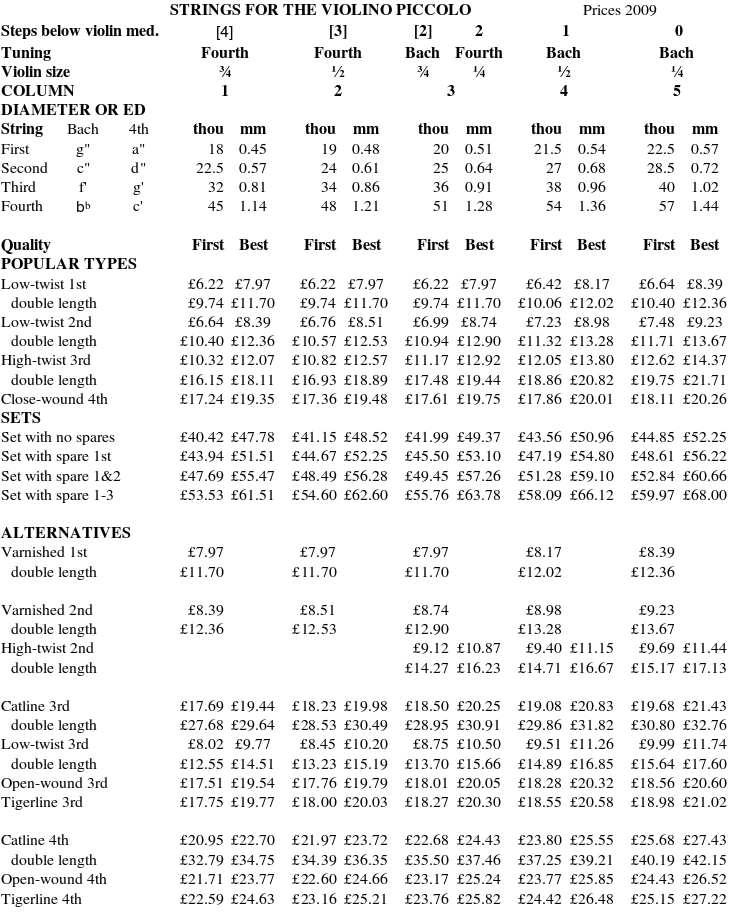
Northern Renaissance Instruments
6 Needham Avenue, Chorlton-cum-Hardy, Manchester M21 8AA, U.K.
Phone & Fax. +44 (0) 161 881 8134 ; proprietor: Dr. Ephraim Segerman [USA]
e-mail: post@nrinst.co.uk ; on internet: http://www.nrinst.co.uk
STRINGS FOR THE VIOLINO PICCOLO
A proper violino piccolo had a string length (distance from nut to bridge) of about 25 cm (the one illustrated by Praetorius had a string length of 24 cm). This is the size of a modern quarter-size violin. At the usual tuning a fourth higher than the violin (with an a" top string), for equivalent acoustic output, the strings should be two steps thinner than those (of strings of the same number) for the violin. A step is about 6% difference in diameter, and this is the difference between adjacent entries in our string tables, and the difference between our designations of 'light' and 'medium', 'medium' and 'heavy', etc. With this size of instrument, at the tuning used by Bach, a minor third higher than the violin (with a g" top string), the corresponding strings should be the same diameter as that for the violin.
If one is using a half-size violin of string length of about 28 cm, for each tuning, the string diameters would be one step thinner than that for a quarter-size violin. If one is using a three-quarter-size violin of about 30 cm string length, for each tuning, the string diameters would be two steps thinner than that for a quarter-size violin.
In summary, the number of steps thinner than corresponding violin strings for equivalent acoustic output on instruments of equivalent quality of resonance is as follows:

Where the number of steps is in brackets [ ], that tuning is not recommended for gut stringing since the top string will break more quickly than usual for the violin. These are the fourth tuning on a half-size and three-quarter size violins and the Bach tuning on the three-quarter size violin. Nevertheless, it is often that there is no choice. With the fourth tuning on a half-size violin and the Bach tuning on a three-quarter size violin, the breaking rate is not so bad, since the first string will break only as frequently as a normal violin tuned a semitone higher. If one is playing at a' = 415 Hz, this is like playing at a' = 440 Hz. With the fourth tuning on a three-quarter size, the breaking rate is worse, being equivalent to a normal violin tuned a tone higher. The top string would most probably last long enough for a concert or recording session, and it can last rather longer if tuned down to the second string when not being played.
If the acoustic output of the instrument one has available is not as high as would balance with the other instruments being played with, the output can be increased by having heavier strings. For this, just pick one's strings from the column pair to the right of the pair in the strings table that results from the combination of instrument size and tuning. Contrary to popular folklore, using a heavier or lighter first string will not change its average time before breaking.
The vast majority of our customers choose our medium gauge strings for the normal violin. So our table of violino piccolo strings lists the sets according to the number of steps below such a medium set.
If one desires catlines to be polished that costs an extra £4.90.
